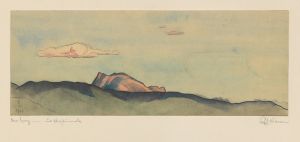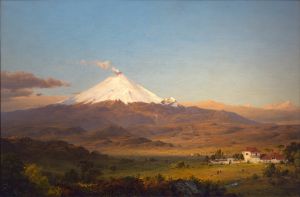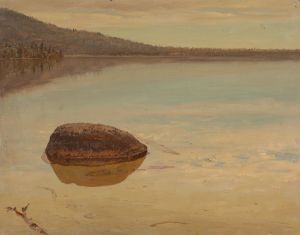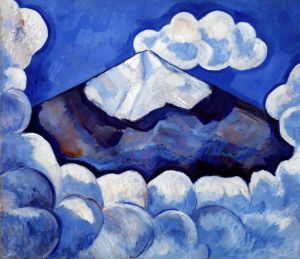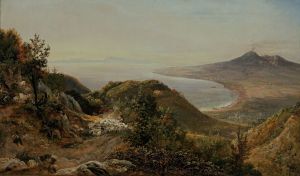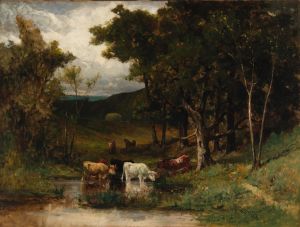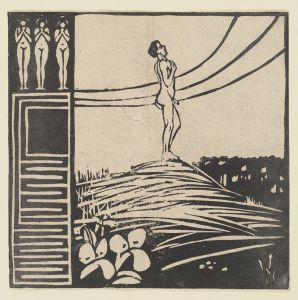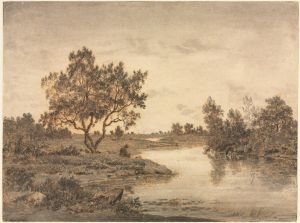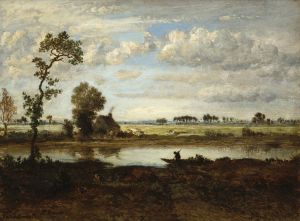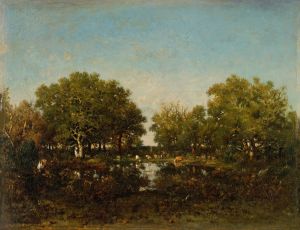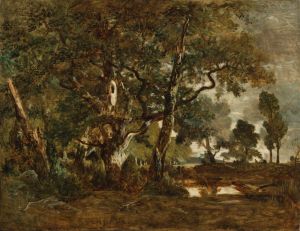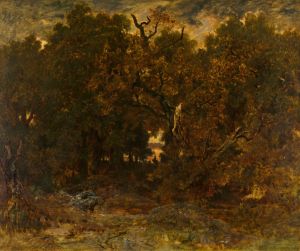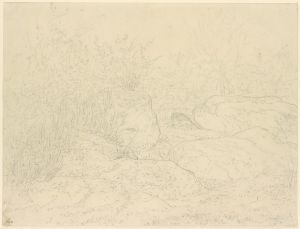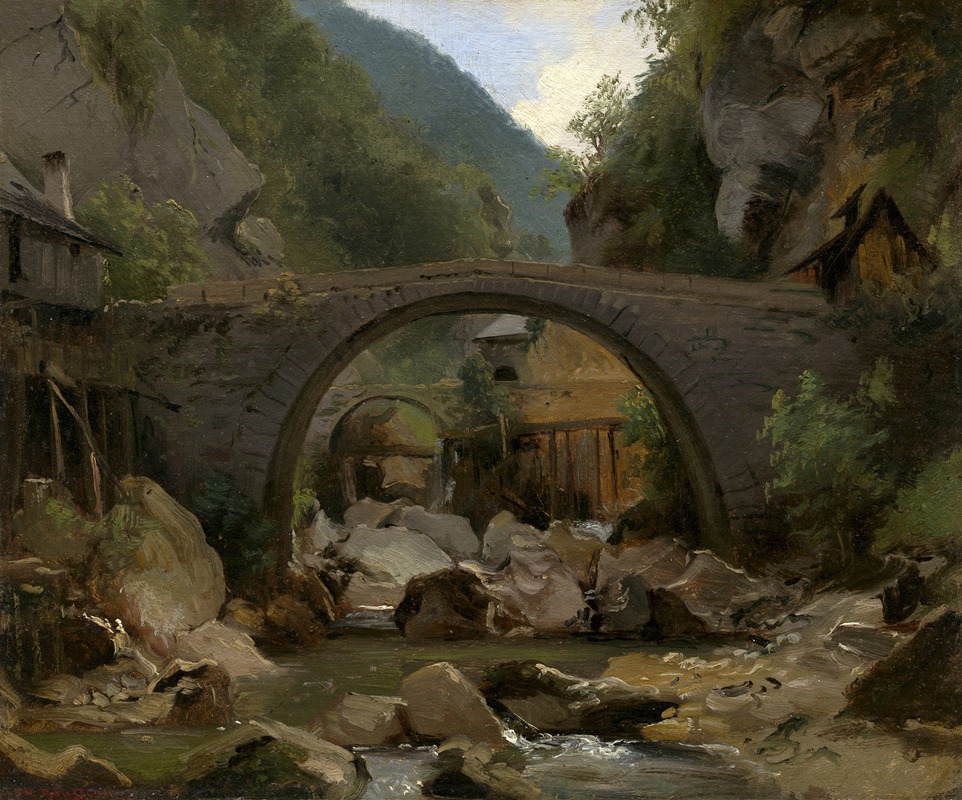
Mountain Stream in the Auvergne
A hand-painted replica of Théodore Rousseau’s masterpiece Mountain Stream in the Auvergne, meticulously crafted by professional artists to capture the true essence of the original. Each piece is created with museum-quality canvas and rare mineral pigments, carefully painted by experienced artists with delicate brushstrokes and rich, layered colors to perfectly recreate the texture of the original artwork. Unlike machine-printed reproductions, this hand-painted version brings the painting to life, infused with the artist’s emotions and skill in every stroke. Whether for personal collection or home decoration, it instantly elevates the artistic atmosphere of any space.
"Mountain Stream in the Auvergne" is a notable painting by the French artist Théodore Rousseau, a prominent figure associated with the Barbizon School. This artistic movement, which emerged in the mid-19th century, was named after the village of Barbizon near the Forest of Fontainebleau, where Rousseau and other artists gathered to paint landscapes directly from nature. The Barbizon School is recognized for its role in laying the groundwork for the later development of Impressionism.
Théodore Rousseau, born in Paris in 1812, was deeply influenced by the natural world and sought to capture the essence of the French countryside in his works. His dedication to landscape painting was evident from an early age, and he often traveled to various regions in France to find inspiration. The Auvergne region, known for its rugged terrain and natural beauty, provided a rich source of inspiration for Rousseau, and "Mountain Stream in the Auvergne" is a testament to his ability to depict the serene yet powerful aspects of nature.
The painting itself is characterized by its detailed portrayal of a mountain stream, set against the backdrop of the Auvergne's distinctive landscape. Rousseau's use of light and shadow, along with his meticulous attention to detail, brings a sense of realism and vitality to the scene. The composition captures the dynamic flow of water over rocks, surrounded by lush vegetation, which is rendered with a palette that emphasizes the natural tones of the environment. This approach reflects Rousseau's commitment to plein air painting, a technique that involves painting outdoors to capture the natural light and atmosphere of a scene.
Rousseau's work was initially met with resistance from the traditional art establishment in France. His early submissions to the Salon, the official art exhibition of the Académie des Beaux-Arts in Paris, were often rejected. However, he persisted in his artistic vision, and by the 1840s, his work began to gain recognition. "Mountain Stream in the Auvergne" exemplifies the qualities that eventually earned Rousseau acclaim: a profound connection to nature, a mastery of landscape composition, and an innovative approach that challenged the conventions of academic art.
The painting is also significant for its influence on subsequent generations of artists. Rousseau's focus on naturalism and his dedication to capturing the transient effects of light and atmosphere were important precursors to the Impressionist movement. Artists such as Claude Monet and Camille Pissarro were inspired by the Barbizon painters' emphasis on painting en plein air and their commitment to portraying the natural world with authenticity and emotion.
Today, "Mountain Stream in the Auvergne" is appreciated not only for its aesthetic qualities but also for its historical significance within the context of 19th-century art. It represents a pivotal moment in the evolution of landscape painting and underscores Théodore Rousseau's role as a pioneer who helped to redefine the genre. The painting continues to be studied and admired for its contribution to the broader narrative of art history, illustrating the enduring appeal of nature as a subject and the artist's skill in rendering its beauty.





